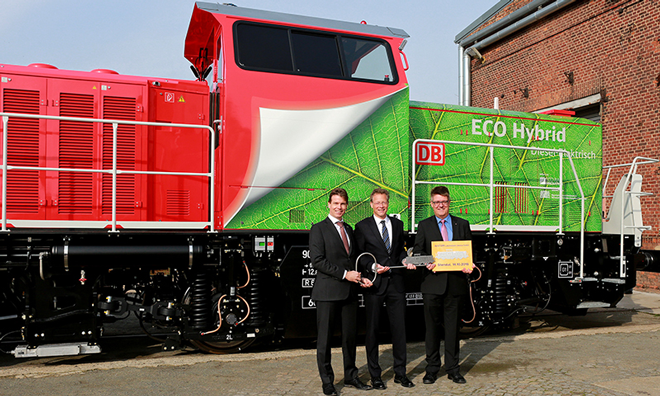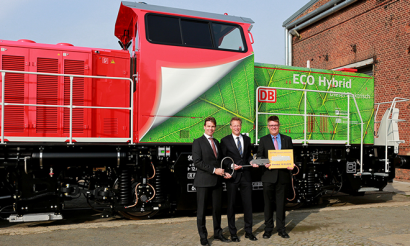Deutsche Bahn takes delivery of five Prima H3 hybrid locomotives
Posted: 18 October 2016 | | No comments yet
Five Prima H3 hybrid locomotives have been presented to Deutsche Bahn during a ceremony at Alstom’s Stendal site in Saxony-Anhalt, Germany.


Five Prima H3 hybrid locomotives have been presented to Deutsche Bahn during a ceremony at Alstom’s Stendal site in Saxony-Anhalt, Germany.


The five new generation Prima H3 hybrid shunting locomotives will be operated by Deutsche Bahn, making a sustainable contribution towards reducing CO2 emissions on rail in Germany.
“Alstom has been consistently developing its environmentally friendly hybrid technology under European conditions for many years, and it is the first manufacturer to have put this technology on rail. Our Prima H3 locomotive is paving the way to the new reality of zero-emission freight transport in Europe,” said Daniel Croonen, Director Service for Alstom Germany and Austria.
Andreas Gehlhaar, Head of Environmental Affairs at Deutsche Bahn AG, added: “We are already thinking of the future. For this reason, we strive for better climate protection and less noise impact. The new Prima H3 hybrid locomotive will help us to achieve both. Hand-in-hand with the industry, DB has brought the environmentally friendly technology to be used in full rail operation. I’m proud that the five vehicles are due to take up service in Franconia from November.”
Prima H3 hybrid locomotives will spend 50-75 percent in battery mode
According to Alstom, the Prima H3 hybrid drive produces up to 50 percent less CO2, while other pollutant emissions (Nitrogen dioxide) are cut by up to 70 percent. The 350 kW diesel generator meets European requirements of exhaust gas standard stage IIIB and has been designed with future exhaust gas standards in mind. The shunting locomotive will spend between 50 percent and 75 percent of its service time in battery mode allowing zero-emission rail transport in urban areas or production plants. As the locomotive can reach speeds of 100 km/h it can be fully integrated within main line traffic. Furthermore, noise emissions have also been significantly reduced.


